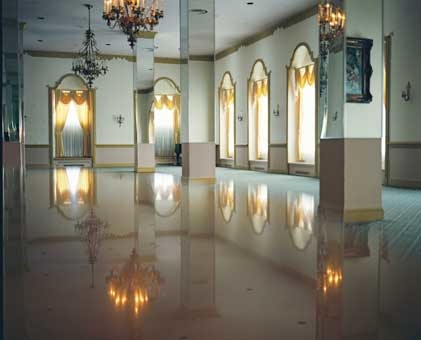Monika Wiechowska appears to be using both these meanings in her solo exhibition at Galerie Fons Welters, and through her choice of focus she highlights the unnoticed, placing it in a new, undefined narrative. Against a strange, almost surreal background, we see three birds. The trees look real, but the background displays a painted, unearthly forest in a typical atmospheric perspective. Trying to grasp what is shown here, we ask ourselves 'where is this, and what is going on?' The Bronx Zoo, New York is the answer, but this answer becomes redundant as soon as it is uttered. What is represented here no longer matters, since the image itself has become the subject of its own reality.
The photographs exhibited by Monika Wiechowska appear to provide insight into the way she works with the medium. The cohesive element here is not the subject or genre, but the way in which the images are produced. Through a free, uninhibited, inquisitive gaze, part of the world is framed and packaged to produce a new reality in which the viewer sees things for the first time. From a perspective as low as a child's gaze, for instance, we see two deer grazing in a garden surrounded by decorative lights. Just briefly, a mysterious, fantasy world comes into being, but a moment later the deer regain their plastic structure and the setting becomes just a garden in a suburb of New York. Now we are no longer looking at a snapshot of the photograph's subject, but at an extension of the time in which the real and artificial, past and present, interact. The result is a double, carefully chosen image that goes beyond what is displayed.
Monika Wiechowska seems to be showing us 'found places'. Sometimes a city scene, sometimes a landscape, sometimes an interior, but in each case the image shows a distinct interaction between the everyday and her view of it. Her specific way of looking is partly a product of her quest for places from the past, whether drawn from memories of mental images or from the place's history. The meditation of the camera restores, as it were, a lost utopia. This same way of looking can now also be used for everyday, common places. Through this conscious illumination, a complexity is revealed that shows how reality can be something else. When the blue moon rises, a transformation becomes visible in which something is lost and something is found.
